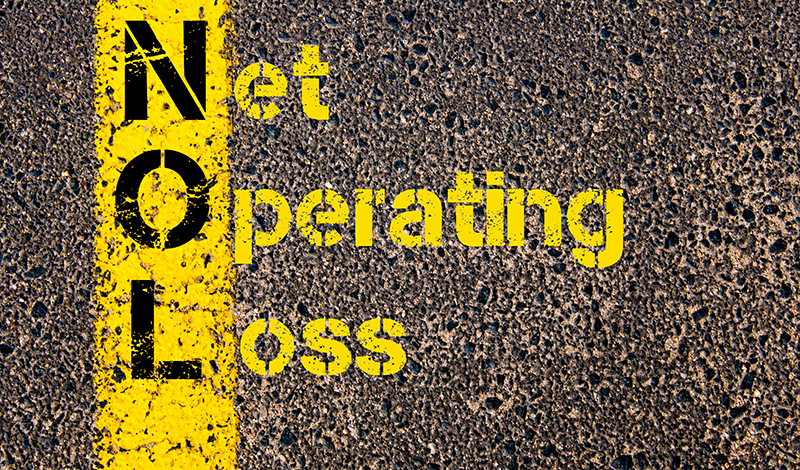Small Business Net Operating Losses – What are my options?
May, 05 2021 by Carolyn Richardson, EA, MBA
Tax year 2020 saw one of the worst economic downturns in modern history, thanks to the coronavirus and Covid-19 pandemic, which sent even the largest economies in the world into the biggest tailspin since the Great Depression. Almost overnight, the tourism and hospitality industries came to a screeching halt, and not long after that, the price of oil dropped to nearly nothing, thanks to the lack of demand and a price war between Russia and Saudi Arabia. The global stock market dropped as much as 30% at the start of the pandemic, and while it has regained much of the losses, it remains unusually volatile.
During all of this, many small businesses in the U.S. suffered, either from local lockdowns or because of the general downturn. Many small businesses, like restaurants, were forced to scramble to find money to purchase take-out containers and personal protective equipment for their employees or were forced to shut down entirely. Some experts estimate it will be several years before the global and U.S. economies recover completely, but many small businesses may never recover, even after receiving substantial assistance from the federal government in the form of Paycheck Protection Program (PPP) loans and emergency grants.
You may find that when you prepare your 2020 federal income tax return that your business has incurred a loss. But have you suffered a “net operating loss” (NOL)? And if you have, what are the tax implications of having an NOL?
For individuals, especially those taxpayers who own and operate a sole-proprietorship or who have an ownership interest in another small business type such as a closely held limited liability company, partnership, or S corporation, the rules surrounding when and how much of a net operating loss you incurred can be complex. Net operating losses can be carried back to prior years or forward to future years depending on the situation, so it’s important to know when you have one. Simply showing a loss on your business may not result in an NOL for tax purposes.
When do you have an Net Operating Loss?
Many taxpayers mistakenly believe that any loss they incur is an NOL, or at least part of an NOL. As with most things in taxes, though, what defines an NOL isn’t that simple.
Generally, an individual taxpayer has a net operating loss when the losses from their business and for-profit activities exceed their other income. If your only source of income is from a business you own and operate, this is fairly straightforward but it becomes more complicated when there are losses coming in not only from a small business, but also from rentals or other investments such as a partnership or LLC interest, or S corporation losses. Some of these investment activities will have separate loss limitations that kick in before the NOL rules, such as the passive activity limitations for rental properties. As a result, while you may have incurred a larger loss on a rental activity, the amount it can contribute to an NOL may be limited.
As a result, having a loss from one activity may not be enough to generate an NOL. For example, say your small business incurred a $50,000 overall loss for 2020 because of coronavirus restrictions. But your spouse was able to work remotely and continued to receive her full salary over $150,000. In this case, your business loss and your spouse’s salary are combined, and your net income for tax purposes will still be greater than $0, so you do not have a net operating loss.
This is a greatly simplified example, so it’s best to refer to IRS Publication 536 for more information on how to calculate the loss and what you can do with it. Please note that this publication is currently being revised and is not available on the IRS website right now.
I have an Net Operating Loss, now what?
 What if the situation was reversed, though, and your business incurred a loss of $150,000 and your spouse’s income was only $50,000? In this case, you would have a net operating loss for 2020. Now you need to decide if you want to carry the loss back to earlier tax years to generate refunds, or to carry it forward to lower your future taxes. But be aware that the rules for the carryback and carryforward of net operating losses have recently been changed.
What if the situation was reversed, though, and your business incurred a loss of $150,000 and your spouse’s income was only $50,000? In this case, you would have a net operating loss for 2020. Now you need to decide if you want to carry the loss back to earlier tax years to generate refunds, or to carry it forward to lower your future taxes. But be aware that the rules for the carryback and carryforward of net operating losses have recently been changed.
Prior to the Tax Cuts and Jobs Act of 2017 (TCJA), NOLs had a mandatory two-year carryback period and could be carried forward for 20 years. Taxpayers could elect to forgo the carryback period by making an election when they filed their return with the original NOL. This was beneficial for taxpayers who had little or no tax liability in the prior two tax years, as filing for the small or nonexistent refunds would not have been time or cost-efficient.
TCJA eliminated the carryback period and required all taxpayers to only carry forward NOLs. The NOL can be carried forward indefinitely, so it never expires as it did under prior law. But it also limited the NOL deduction in future years to 80% of income, so an NOL can no longer reduce your tax liability to zero in a carryforward year. This became effective for tax years beginning in 2018 and was supposed to continue indefinitely. These rules applied to most NOLs, although there were some exceptions for certain types of businesses and casualty losses.
Then coronavirus hit, and many more businesses started incurring losses. Since many taxpayers were not able to depend on financial support from spouses who may have also lost their full time jobs, Congress decided to temporarily suspend the TCJA’s net operating loss rules and implemented a new set of NOL rules under the CARES Act in March 2020.
The CARES Act again provides for an NOL carryback period for some years. For NOLs arising in tax years beginning in 2018, 2019, and 2020, NOLs can be carried back five years but only for NOLs arising in these three recent tax years. The carryback period can again be waived by making an election to do so when you file your return. Keep in mind if you do carry back an NOL, you must carry it back to the earliest possible year available, so a 2020 NOL would have to be carried back to 2015 to determine if any of it can be used, and then to the intervening years from 2016-2019. The CARES Act also waived the limitation of 80% of taxable income for NOLs arising in these years when they are carried back, so an NOL that is generated in 2020 and carried back could reduce income in the carryback year up to 100% of that year’s income. The rules for NOLs arising from tax years beginning before 2018 have not been changed, i.e., they continue to have a 2-year carryback and 20-year carryforward. Any portion of a net operating loss that occurred in taxpayers 2018 through 2020 that is not used in a carryback year is again subject to the 80% limitation in the carryforward years beginning after 2020.
If you have net operating losses from years prior to 2018 that have been carried forward into more recent years, there is a formula that must be used to determine your allowable NOL because of the 80% limitation, since NOLs incurred prior to 2018 are not subject to the 80% limit. Therefore, it’s important to do some tax planning (or hire a tax professional to do some tax planning) to determine what will work out the best for your particular financial circumstances, both in the past and for what you anticipate in the future.
There are some questions you probably need to ask yourself before deciding what to do with the NOL in the carryback/carryforward calculations, such as:
- How much did you pay in income taxes in the five years prior to your NOL year? If your net income and taxes were low, you may not receive much back in refunds from doing a carryback.
- Were there other taxes paid in those years that might be reduced by the NOL? For example, alternative minimum taxes might have been incurred in prior years, which would be reduced by the NOL carryback, but the NOL carryback would need to be recalculated using the AMT rules. That may or may not result in a different loss amount which could again reduce the benefit from a carryback. Also, keep in mind that an NOL carryback will not reduce any self-employment taxes you might have incurred in a prior year, as it can only be used to reduce regular income taxes. If your only taxes in prior years were from the self-employment tax, you should forego the carryback period.
- Is it likely that your business will rebound quickly and profitably in future years? Depending on the type of business, recovery from coronavirus losses may be slow or swift. For example, restaurants typically operate on thin margins even in good years, so a full recovery may be slower than a business that caters to the travel industry, where pent-up demand may result in a boom once more people are vaccinated and people feel safe enough to travel again.
Since there is still time to file your 2020 return, especially with the newly extended due date of May 15, you should take your time to consider your options and the lasting impact your choices may have, even if you have to file an extension. This isn’t something that should be rushed into, as it can have lasting effects for many years to come.
Also, don’t forget to check with your state tax department to see what rules they have in place for net operating losses. The states don’t always use the same rules that the IRS uses, and the tax impact can be altered dramatically by a different state treatment. If your state doesn’t follow the federal rules - for example, some states do not allow a carryback at all - then you will need to keep track of your allowable state loss carryforward separately from your federal one.
And just as a final word, it’s a good idea to make sure your tax records for any year that shows an NOL are organized and complete. Claiming an NOL can raise your likelihood of being audited, and because the IRS can review the NOL at any time during the tax years you are claiming the loss carryforward, it is a wise taxpayer who holds on to those records for many years.





